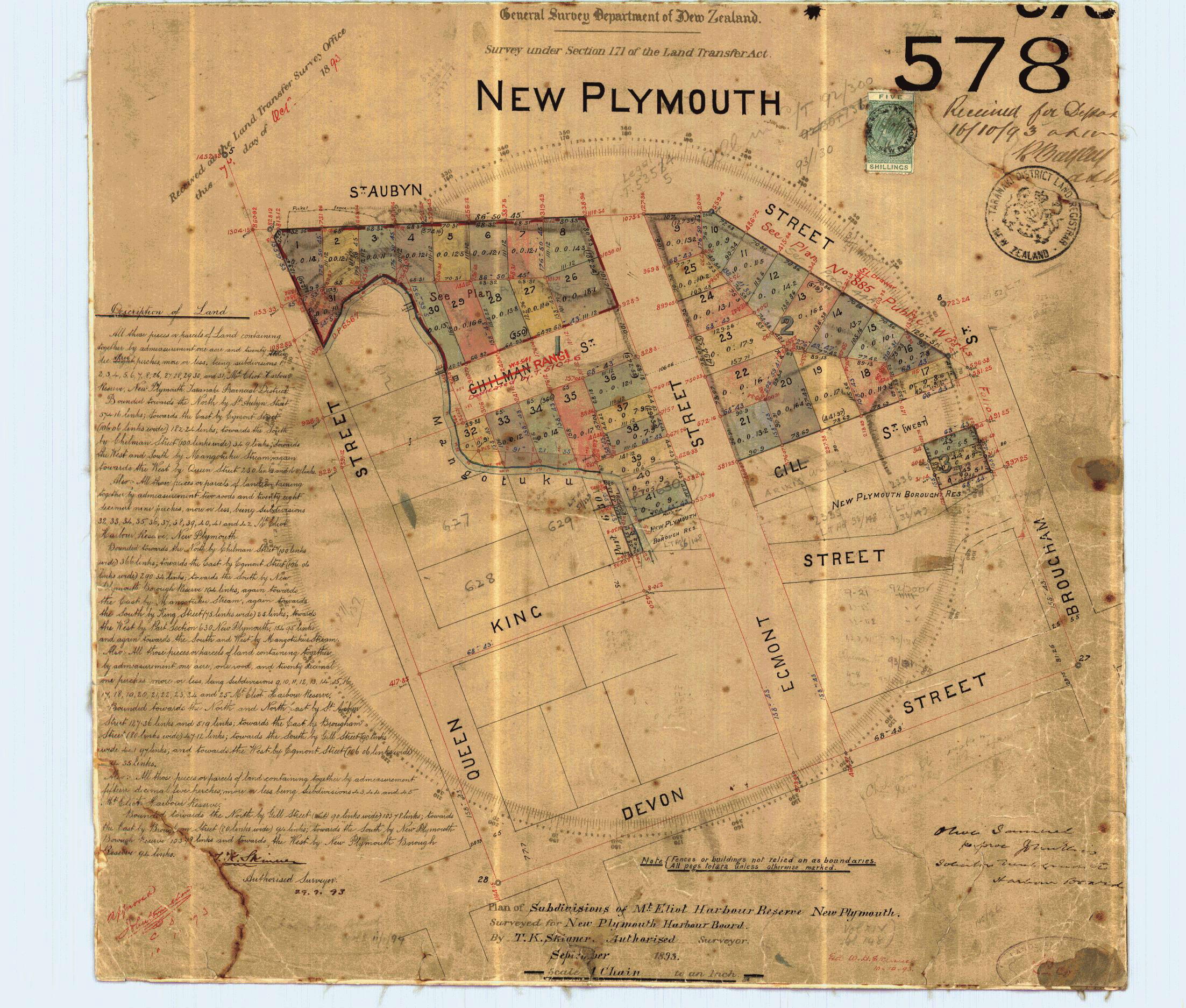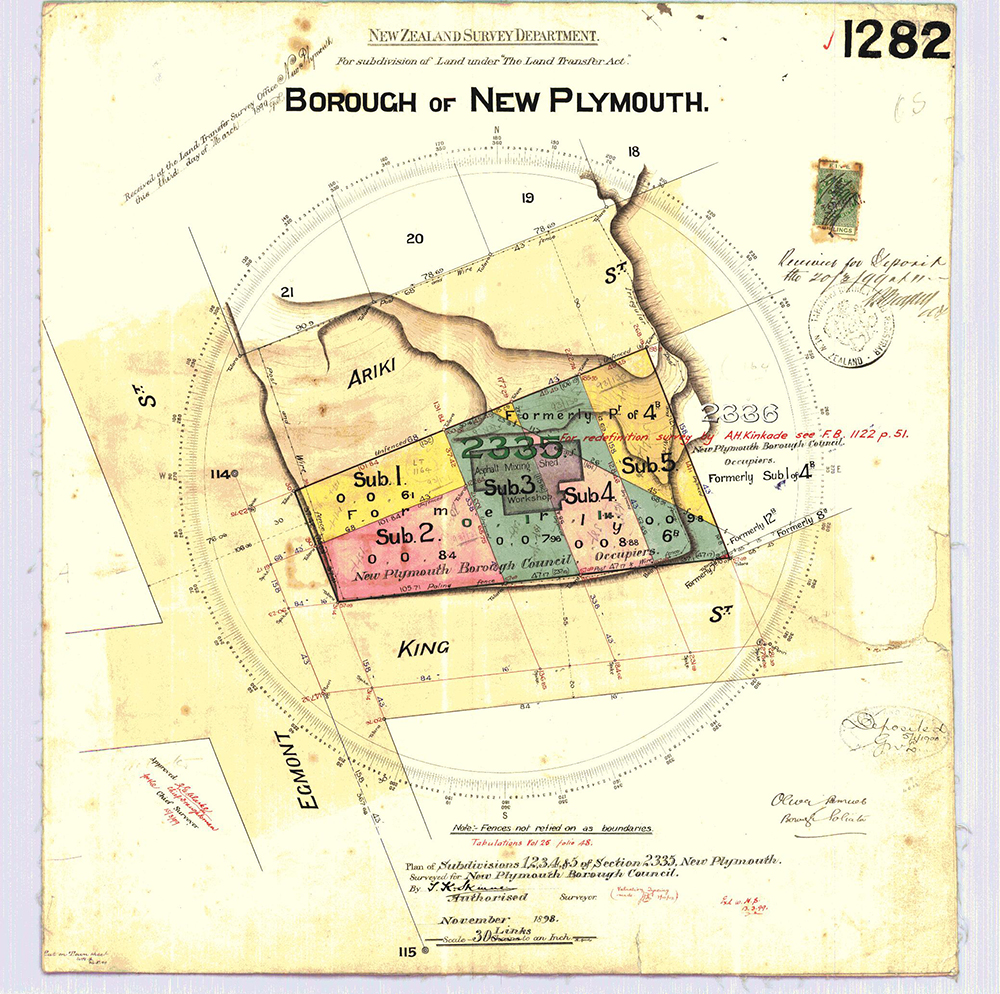



Ariki Street traverses the former site of Puke Ariki pā, later known by the Pākehā settlers as Holsworthy Hill and Mt Eliot. The street takes its name from the pā and probably cuts through what were its lower foothills. Although little evidence of the pā remains, it has held a commanding presence overlooking the early development of New Plymouth city.
During its pre-European history, it was a fortified stronghold for Ngāti Tāwhirikura and Ngāti Te Whiti of Te Ātiawa. The literal translation ‘Hill of Chiefs', implies that those of high rank had strong associations with it. The stronghold was abandoned when Waikato tribes invaded during the Musket Wars and the inhabitants of Puke Ariki were forced to leave.
From then until the arrival of European settlers, it remained uninhabited. Early narratives depict Puke Ariki as being covered with native vegetation, teeming with wildlife and encircled by the foreshore and the Huatoki and Mangaotuku Rivers. Upon arrival, settlers to New Plymouth would have been greeted by this marvellous vista. Its former history as a pā site was not immediately obvious; however the site still had remnants of storage pits and, in some areas, there was evidence of burial grounds.
Even though the site was Waahi Tapu, it quickly gained prominence in the new settlement and it became known as Mt Eliot. Several administrative functions were established there, including the Provincial Government Offices and it was, at one time, the site for Governor Grey’s residence. A depiction of this can be seen in an 1849 painting by Henry Maplestone. The site went on to become a significant defensive location during the Taranaki Wars. With elevated view shafts, it provided a safe position for imperial troops. It continued its military role when the site became the headquarters for the colonial forces.
Then as its military role diminished, and the city grew, Puke Ariki/Mt Eliot came to be seen as an obstacle to development of the central business district and, over time, it was levelled to form Puke Ariki landing. The area is now a significant feature of the CBD and its namesake, Puke Ariki – Library, Museum and Visitor Information, occupies much of the original space. Considering its purpose, it is a fitting reminder of the area’s past.
This story was originally published in the Taranaki Daily News.
Please do not reproduce these images without permission from Puke Ariki.
Contact us for more information or you can order images online here.